#vegan bayreuth
Explore tagged Tumblr posts
Text
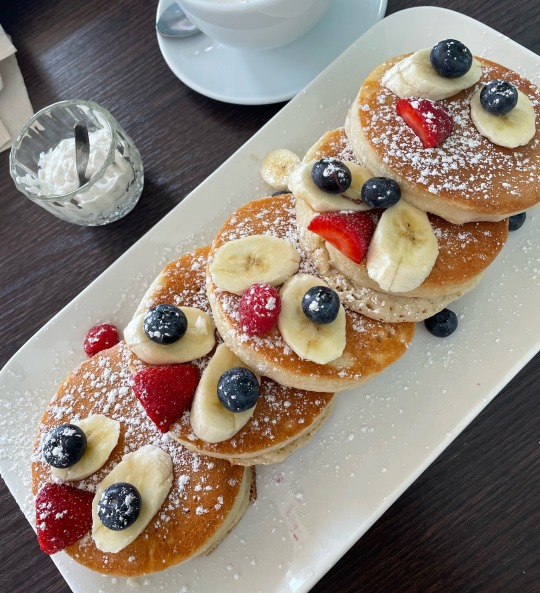
the fluffiest vegan pancakes out there!
BaggersLA - Bayreuth, Germany 🇩🇪
#vegan#veganism#go vegan#be vegan#veg#vegan treats#vegan brunch#brunch#vegan breakfast#pancakes#vegan pancakes#bayreuth#vegan bayreuth#germany#vegan germany#fruit#fresh fruit#vegan dessert#meatless
145 notes
·
View notes
Text

Fluffy Vegan Pancakes
#vegan#veganism#go vegan#be vegan#veg#vegan treats#vegan brunch#brunch#vegan breakfast#pancakes#vegan pancakes#bayreuth#vegan bayreuth#germany#vegan germany#fruit#fresh fruit#vegan dessert#meatless
6 notes
·
View notes
Link
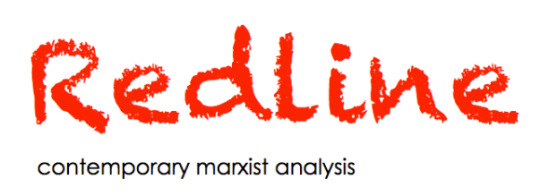
New Zealand schools have introduced a climate change resource that suggests children “eat less meat and dairy”, even though teachers will not know how much meat or dairy any child in their care has eaten. Opinion pieces in the papers have called for the reduction of meat and dairy in hospital menus, not usually generous sources of such foods, despite the well-known risks of undernutrition, especially of protein, in the frail and elderly. Globally, the influential and once-objective medical journal the Lancet has hosted Eat Lancet, a coalition of vegan and vegetarian technocrats backed by processed food manufacturers, and promoted their agenda. The Guardian newspaper accepted an ��626783 grant from the backers of Impossible Foods to run a series of articles against animal agriculture.
These initiatives, aimed at remodelling our food supply in a way that favours the multinational food processing and seed-and-chemical corporations, whose control of many aspects of farming and diet is already problematic, have run far ahead of the scientific community’s efforts to understand the health effects of such dietary change.
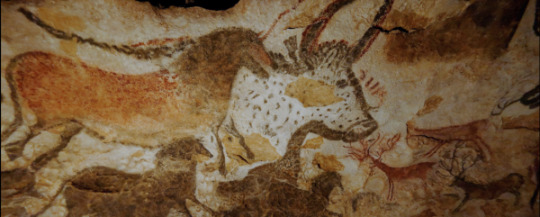
Our hunter-gatherer past
The Neolithic Revolution was the first alteration in human affairs that is generally considered worthy of the term Revolution. In Marx’s terms, it saw a change in the means of production sufficient to form new classes aware of their identities, and thus a change in the relations between people. Early humans had fed themselves in an opportunistic, hunter-gatherer fashion that tended to favour a diet of animals supplemented with plants where and when these were available. Large animals made the best meals but gathering activities could collect many smaller ones, as well as eggs, grubs etc.
The people of the Mesolithic era discovered that some animals could be herded and some plants grown in gardens (not usually by the same community, because one activity favours nomadism and the other favours a sedentary habit) but these activities, which greatly improved food security after the decline of the prehistoric mega-fauna due to hunting and climate pressures, tended to occur at the communal level and probably did not create major class differences between the people involved.

The invention of farming
The Neolithic Revolution, which unleashed the human potential for war, creativity, and social division, resulted from the identification of the germs of plants (specifically grains and legumes) as durable sources of energy. If grains were grown (I will use grains in the wider sense of “cereals”, after Braudel, including other dried germs such as peas) and there was a surplus, this surplus would still be edible over the next year, a year when drought or pests or diseases might wipe out the other food sources that hunter-gatherers depended on. This advantage was offset by the nutritional poverty of grain-based diets, so that tuberculosis probably became an endemic disease during this period,[1] but the existence of a less-perishable surplus allowed the diversion of part of the population away from food gathering for large parts of the year, and saw the creation of armies and other workforces.
In Europe, the Neolithic Revolution is dated at around 10,000 BC and its arrangements are a matter of prehistory, but in China this change occurred later and the written record around Bi-gu or grain avoidance includes folk-memories of conflict between grain eating and grain avoiding peoples.
The history of colonisation is the history of the conquest of lactose-intolerant peoples by lactose-tolerant populations, and of non-grain eaters by grain-eaters. In the Indian sub-continent, a combination of dairy herding and a cereal diet high in legumes uniquely allowed the survival of a substantially vegetarian population, and saw the conservation of genes favouring reproduction on such a diet, including genetic polymorphisms still rare in European populations (adaptive mutations only predominate where many individuals without them have failed to survive or reproduce).[2] That the Indian social system became more aggressively class-based than any other is probably no co-incidence; prejudice against meat-eating is still used as a tool of social control against minorities, while meat-eating is one way young Indians today identify as modern and egalitarian. However there were some important exceptions to the trend – the Aztecs were a hunter-gather people who conquered and dominated the Mesolithic agriculturalists of Mexico, and the Mongols were nomadic herders and hunters whose greater stamina and independence allowed them to defeat the rice-fed armies of the Chinese Emperors (after conquering this breadbasket, the successive Mongol Khans seem to have eaten and drunk themselves to death).
Early vegetarian ideology
In the European and Asian cereal-based societies the poorest classes went without meat, supplementing cereals when possible with buttermilk or blood pudding which were more economic replacements. The rich ate as much meat as they could. The idea that an entire society might avoid meat is a recent one with its roots in religious practice, and, insofar as it has any political basis, this flows in two distinct streams – the eco-fascist, in which meat avoidance is a sign of “purity”, most humans are a burden on the Earth, and the Indian vegetarians are of course Aryans. This is something like the vegetarian vision that Adolf Hitler picked up while studying anti-Semitism with Wagner’s heirs at Bayreuth.
And then there is a Marxist-Anarchist, and latterly Intersectional, version, founded on a valuation of animal rights as inseparable from, and a logical extension of, human rights. Vegetarianism was a frequent obsession of the early British Socialists; G.B. Shaw, who derived most of his energy from dairy fat and lived to the age of 94, made himself into a well-known example, and the idea was sufficiently entrenched among the British Socialists and their milieu that H.G. Wells preserved its internal contradictions for posterity in The Time Machine. In his far-future vision, humanity has evolved into two separate species. The Morlocks are descendants of working-class meat-eaters, the Eloi of leisure-class vegetarians – all Wells’ loathing is reserved for the Morlocks, yet it is obvious they are (still) the engineering brains keeping their world running and the Eloi fed. The Eloi are useless for anything but enjoying the sunshine and feeding the Morlocks, and the discordance in Wells’ progressive values as he describes both species is as shocking as anything else in the story.
The first large-scale experiment in plant-based protein was attempted by the Bolsheviks. As usual, it’s hard to separate the roles played by idealism and cynicism in the story, but the bare bones are that the Soviets found their initial attempts to remodel the countryside rebuffed, blamed this on the recaltricance of the kulak class, and set out to destroy them. The problem being that the kulaks, owning most of the cattle and sheep across the Russian Republics, helped to feed the people. Beginning in the 1920s, soy experts from the USA (then the Western world’s leading soy producer) were among the many foreign technicians imported into Russia, and soy processing plants were built and soy production increased to 283,000 tonnes in 1931, the year Stalin unleashed enforced collectivisation and the terror against the kulaks (and also the Kazakhs, a herding people who suffered the largest proportionate loss of life during this period). This led to the loss of millions of animals, either killed by their dispossessed owners or mismanaged by their inexperienced new owners. The soy project was hardly able to prevent the massive famines that followed, and by 1935 soy production had dropped to 54,000 tonnes. Though soy milk would later prove useful during the siege of Leningrad, by the 1930s soy had probably only served one purpose, as a statistic needed aforehand to quell the objections of pragmatic delegates to the destruction of the kulaks and their livestock.
Today we face the revival of this idea, of plant protein that will create a world with no need for animal protein, and the remodelling of life in the countryside, with the new impetus of climate change as its driver. Livestock cycles natural carbon, meaning there is no net addition of C02 to the atmosphere – and its contribution to the shorter-lived methane precursor has not changed since 2000 (methane rises have been due to fracking, methane itself AKA “natural gas”, landfill, and rice production; methane-emitting animals have always existed on Earth in substantial numbers, and have not created a novel situation in the sense that the discovery of coal, oil and gas did). We have recently seen how much global disruption is required to reduce fossil fuel CO2 emissions to 2006 levels, levels which will still warm the planet if they continue. It could be still be worth reducing agricultural cycling of CO2 through methane, which is more warming than CO2 if this is cost-free, but is it?
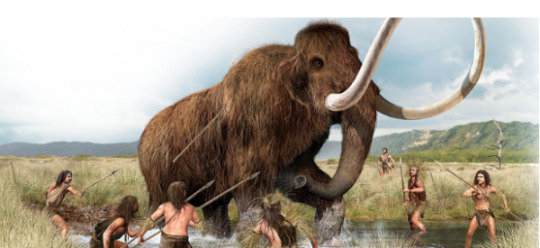
Why humans evolved as meat eaters
Animal foods, and especially red meat, supply a constellation of nutrients not found together (if they are found at all) in any plant food. Nutrients are those chemicals essential for the functioning of the human organism, and plants, but not livestock, can survive well without nutrients such as amino acids, fatty acids, vitamins and minerals that are essential to humans. Surviving as a vegetarian or vegan is possible for some (perhaps assuming the genetic variants referred to earlier are present) but to thrive requires knowledge of these nutrients, where to find them, how to process the foods that supply them, or how to supplement them. Thriving as an omnivore or even a complete carnivore does not – nutritional sufficiency is the reason we evolved eating meat and other animal foods long before we learned there were such things as essential nutrients.
The reasons for avoiding meat or all animal foods can have a class basis – veganism may be taken up by educated middle-class adults, more likely to be exposed to “health food” ideas and aware of the need to supplement, some of whom then commercialise their habits as social media “influencers”. Meat avoidance is also being adopted increasingly by educated middle-class children for identity or compassionate reasons, but the poor may also avoid meat because of its cost when a loaf of bread or a packet of flavoured noodles can be bought for a dollar; these two motivations sometimes coincide when students in temporary poverty make a virtue of what they perceive to be a necessity.
Does the meat-avoiding behaviour of young people have unintended costs? Several observational studies have looked at the characteristics of meat-avoiding populations and found alarming increases in depression, anxiety and self-harm.
“The majority of studies, and especially the higher quality studies, showed that those who avoided meat consumption had significantly higher rates or risk of depression, anxiety, and/or self-harm behaviors. There was mixed evidence for temporal relations, but study designs and a lack of rigor precluded inferences of causal relations. Our study does not support meat avoidance as a strategy to benefit psychological health.”[3]
How can we explain these correlations? Why should we assume that they are causal?There are several lines of evidence to support a causal link: 1) several nutrients found in meat and animal foods are important factors in mood and cognition; vitamin B12, iron, carnitine, DHA, choline and tryptophan are some examples.[4] 2) the fatty acid mix in dairy and red meat has a similar composition to that of amniotic fluid and breast milk which has anxiolytic (anti-anxiety) effects in young animals.[5] 3) soy is a convenient and cheap replacement for animal protein; soy processing in Western diets results in a 10-fold higher level of the estrogenic contaminant isoflavone than that found in Asian diets.[6] Soy isoflavone causes anxiety behaviour in young female animals, and there is evidence supporting psychotropic and hormonal effects in humans.[7,8,9.10] Interestingly, while right-wing critiques of soy eating focus on effects it can have on young men, the scientific evidence for adverse effects in younger females, converting to HRT-like benefits after menopause, is stronger.[11] 4) other toxins found in plants, such as salicylates and oxalates, as well as problematic proteins such as gliadin/gluten and zein, may be present at higher levels in meat-free diets (but are not unique to them). A vegan mince sold in Countdown supermarkets is simply a coloured blend of soy protein and gluten, a protein linked to the risk of schizophrenia.[12] In the New Zealand context it would be relatively easy to confirm or dispute some of these associations. Everyone admitted to hospital for longer than a day supplies their dietary preferences. The dietetic preference data from psychiatric admissions could be both linked to outcomes over time and compared with the population average distribution, or the distribution in a ward where diet is least likely to play a role in admissions.
Iron deficiency in women
Young women in New Zealand are the most likely to report being vegan or vegetarian in surveys, as elsewhere in the world. Vegans in the Gender Studies field generate papers linking meat to masculinity, with the implication that this masculinity is toxic and might be improved by a plant-based diet.[13] The corollary of this belief – that women may therefore be weakened by meat-avoidance – is never considered. In a 1980 essay by Gloria Steinem called The Politics of Food (in the collection Outrageous Acts and Everyday Rebellions) she describes some of the cultural constructs by which women are deprived of the good nutrition which men use to stay dominant. The belief that men need to eat red meat more often than women may have been valid when the average man was more likely to have to survive an attack by a wild bear than the average woman, but today it is mainly women who suffer from serious iron deficiency. The rate – and the cost to the health system – is increasing in New Zealand as more women give up meat. Iron deficiency anaemia in early pregnancy is associated with neurodevelopmental disorders in children, not an outcome that will increase the mother’s autonomy.[14]
In Georg Büchner’s 19th century “working class tragedy” Woyzeck, filmed by Werner Herzog with Klaus Kinski in the leading role and the subject of an opera by Alban Berg, the title character, a soldier, is subject to experimentation by a sadistic army doctor. The experiment involves Woyzeck living on nothing but peas. Peas may supply a complete protein, but Woyzeck goes insane; the deprivation being the final straw in his alienation. James Cameron, the film-maker responsible for Avatar and Titanic, is investing heavily in pea protein as if this were his gift to New Zealand. I am not sure whether he has watched Woyzeck – one would think he has.
Plant-based vs meat-based
Again, we have the specificity of plant germs as commodity; their low cost of production, long storage life and versatility of processing outcomes makes them an ideal investment and a robust one, as poverty and adversity increases their consumption, as we saw during the 2020 Lockdown Event. However, a plant-based burger is nutritionally greatly inferior to a meat burger, and that burger is often the most nutritious single food item many will people eat in the course of their day. The current push to eat a plant-based diet for “planetary health” is something that all the multinational food processors have signed up and provided funding for, and why not – Coca Cola, Unilever, Nestlé have always sold us plant-based foods. We notice that while iron-deficiency anaemia increases in New Zealand with the reason in plain sight, Nestlé scientists here in NZ are developing a more potent form of supplemental iron to add value to their products as their parent company backs the push to reduce meat. (As usual, it’s hard to separate the roles played by idealism and cynicism in the story). But, you may well ask, isn’t eating meat linked to an increased risk of cancer and heart disease? These associations are small to begin with, but they are also intensely confounded by social class and educational status. Supposing a factory that makes a carcinogenic chemical is hiring. Who is more likely to apply for that job – a meat eater (who will likely have a bigger family to support, among other considerations) or a vegan? Who, so to speak, eats all the pies, and needs food that is filling and nutritious without having to give it much thought? Who is more likely to work two jobs and be exposed to the disruptive metabolic effect of shift work? Carcinogen exposure and shift work are just two of the confounding variables ignored in diet epidemiology. (That meat-eating in Western populations may symbolise or associate with labour itself – as it did for H.G. Wells when he wrote The Time Machine – is not a consideration I have found discussed in the epidemiological literature.)
Certainly one can think of mechanisms that might link meat to disease, as one can with any food, but one can also think of protective mechanisms; several of the nutrients found mainly or only in animal foods are required for various antioxidant and immune defensive enzymes, and some like carnitine and EPA even have a place in the management of heart disease. The argument against meat-eating should not be confused with the argument for sometimes rationing a valuable food that is in short supply. The wartime rationing of meat in the UK is thought to have improved the health of the poorest by guaranteeing a greater supply than they had had previously, at a more affordable price. In Europe, the peasants who supplied the cities with meat, dairy and luxury foods such as oysters were sometimes forced by network disruptions to consume these foods – which many of them had never tasted before – with benefit to their own health.
The plant-based agenda can scarcely be expected to recognise these benefits, or understand the argument summarised by Williams and Dunbar (with regard to the vitamin nicotinamide and amino acid tryptophan in their tuberculosis paper), that if better data collection and analysis resulted in us ”…returning to our egalitarian past and redistributing meat or its components that supply NAD (avoiding both the highs and the lows between individuals and over individual lifetimes) [this] may be more effective than subsidizing corn grain (while the increased prosperity from unlocking human potential should pay for the intervention).”[1] Progress – which includes unlocking human potential from the chains of preventable mental and physical disease – depends on good data, and we do not yet seem to collate the data required to know whether or for whom plant-based diets are safe in New Zealand.
George Henderson works as a researcher for Professor Grant Schofield and the team behind the What The Fat books and the social enterprise PreKure, which has been running free lifestyle and health programs through the lockdown. He is the author or co-author of several scientific articles and letters published by the BMJ, Lancet Diabetes and Endocrinology, the JAMA, and other journals, including an influential review of low carbohydrate diets in diabetes management for the New Zealand Medical Journal. A musician, songwriter and amateur musicologist, he has recently presented a series of podcasts on 20th century women composers for Karyn Hay’s Lately show on RNZ.
References:
[1] Williams AC, Dunbar RI. Big brains, meat, tuberculosis, and the nicotinamide switches: co-evolutionary relationships with modern repercussions?. Int J Tryptophan Res. 2013;6:73‐88. Published 2013 Oct 15. doi:10.4137/IJTR.S12838 [2] Kothapalli KS, Ye K, Gadgil MS, et al. Positive Selection on a Regulatory Insertion-Deletion Polymorphism in FADS2 Influences Apparent Endogenous Synthesis of Arachidonic Acid. Mol Biol Evol. 2016;33(7):1726‐1739. doi:10.1093/molbev/msw049
[3] Urska Dobersek, Gabrielle Wy, Joshua Adkins, Sydney Altmeyer, Kaitlin Krout, Carl J. Lavie & Edward Archer (2020) Meat and mental health: a systematic review of meat abstention and depression, anxiety, and related phenomena, Critical Reviews in Food Science and Nutrition, DOI: 10.1080/10408398.2020.1741505 [4] Frédéric Leroy & Nathan Cofnas (2019) Should dietary guidelines recommend low red meat intake?, Critical Reviews in Food Science and Nutrition, DOI: 10.1080/10408398.2019.1657063 [5] Contreras CM, Rodríguez-Landa JF, García-Ríos RI, Cueto-Escobedo J, Guillen-Ruiz G, Bernal-Morales B. Myristic acid produces anxiolytic-like effects in Wistar rats in the elevated plus maze. Biomed Res Int. 2014;2014:492141. doi:10.1155/2014/492141 [6] Fernandez-Lopez A, Lamothe V, Delample M, Denayrolles M, Bennetau-Pelissero C. Removing isoflavones from modern soyfood: Why and how?. Food Chem. 2016;210:286‐294. doi:10.1016/j.foodchem.2016.04.126 [7] Hicks KD, Sullivan AW, Cao J, Sluzas E, Rebuli M, Patisaul HB. Interaction of bisphenol A (BPA) and soy phytoestrogens on sexually dimorphic sociosexual behaviors in male and female rats. Horm Behav. 2016;84:121‐126. doi:10.1016/j.yhbeh.2016.06.010 [8] Tillett T. Full of beans? Early soy exposure associated with less feminine play in girls [published correction appears in Environ Health Perspect. 2012 Jan;120(1):A17]. Environ Health Perspect. 2011;119(12):A525. doi:10.1289/ehp.119-a525b [9] Adgent MA, Daniels JL, Rogan WJ, et al. Early-life soy exposure and age at menarche. Paediatr Perinat Epidemiol. 2012;26(2):163‐175. doi:10.1111/j.1365-3016.2011.01244.x [10] Hibbeln, J.R., SanGiovanni, J.P., Golding, J., Emmett, P.M., Northstone, K., Davis, J.M., Schuckit, M. and Heron, J. (2017), Meat Consumption During Pregnancy and Substance Misuse Among Adolescent Offspring: Stratification of TCN2 Genetic Variants. Alcohol Clin Exp Res, 41: 1928-1937. doi:10.1111/acer.13494 [11] Patisaul HB, Jefferson W. The pros and cons of phytoestrogens. Front Neuroendocrinol. 2010;31(4):400‐419. doi:10.1016/j.yfrne.2010.03.003 [12] Čiháková D, Eaton WW, Talor MV, et al. Gliadin-related antibodies in schizophrenia. Schizophr Res. 2018;195:585‐586. doi:10.1016/j.schres.2017.08.051 [13] Jessica Greenebaum & Brandon Dexter (2018) Vegan men and hybrid masculinity, Journal of Gender Studies, 27:6, 637-648, DOI: 10.1080/09589236.2017.1287064 [14] Wiegersma AM, Dalman C, Lee BK, Karlsson H, Gardner RM. Association of Prenatal Maternal Anemia With Neurodevelopmental Disorders. JAMA Psychiatry. 2019;76(12):1294–1304. doi:10.1001/jamapsychiatry.2019.2309
3 notes
·
View notes
Photo

wenn der norden den norden des südens rockt. fritz-kola and the franken-gang. #fritzkola #fritzcola #willkommenimwach #kolaandthegang #trinklieberfritz #vielvielkoffein #lotsnlotsfritz #lotsnlotscaffeine #vegan #allesaufschwarz #imauftragderkola #fritzkolakay #flohatkeininstagram #oberfranken #unterfranken #mittelfranken #bamberg #nürnberg #fürth #erlangen #hof #bayreuth #würzburg #schweinfurt #coburg #lichtenfels #kronach #kitzingen #forchheim #neustadtanderaisch https://www.instagram.com/p/B3gznQzCCAc/?igshid=5gn8prl7hfbj
#fritzkola#fritzcola#willkommenimwach#kolaandthegang#trinklieberfritz#vielvielkoffein#lotsnlotsfritz#lotsnlotscaffeine#vegan#allesaufschwarz#imauftragderkola#fritzkolakay#flohatkeininstagram#oberfranken#unterfranken#mittelfranken#bamberg#nürnberg#fürth#erlangen#hof#bayreuth#würzburg#schweinfurt#coburg#lichtenfels#kronach#kitzingen#forchheim#neustadtanderaisch
1 note
·
View note
Photo

VEGANES Ei? Warum nicht?! Heutzutage muss ja ALLES fleischlos sein um die Umwelt zu schützen ‼️🙄🤣 Naja, was soll es. Mein Beitrag dazu. Würzen dürft ihr es mit FLEISCHBRÜHE... 😂.... (hier: Bayreuther Innenstadt) https://www.instagram.com/p/CjaPnJbM32G/?igshid=NGJjMDIxMWI=
0 notes
Text
Fwd: Graduate position: UBayreuth_Germany.SpermMicrobeInteractions
Begin forwarded message: > From: [email protected] > Subject: Graduate position: UBayreuth_Germany.SpermMicrobeInteractions > Date: 20 February 2016 at 07:09:11 GMT > To: [email protected] > > > ***DISENTANGLING HOST-PARASITE AND MALE-FEMALE COEVOLUTIONARY EFFECTS > ON HOST FITNESS*** > > I am looking for an ambitious PhD-candidate interested evolutionary > biology and reproductive physiology. The project aims to disentangle > host-parasite and male-female coevolutionary effects on host fitness in > the common bedbug, Cimex lectularius. The project is funded for 3 years by > the German research foundation (DFG). It involves genomics, metagenomics, > and amplicon sequencing of microbes associated with bedbug reproduction, > including sexually transmitted microbes, and experimental manipulation as > well as immunoassays, molecular analysis of paternity and life-history > trait analyses. The project aims to quantify sperm-microbe interactions > and their consequences for male and female fitness. Therefore, I am > looking for a candidate with an open mind to new research ideas, a > solid background in experimental design and statistics. A plus would > be if the candidate has some knowledge of either microbial ecology, > bioinformatics (experience with a unix environment, the R programming > language, especially the ‘vegan’ package) or skills in any of the > above-mentioned areas. The starting date is 1st May 2016. > > Within the Department of Animal Ecology I > (https://ift.tt/3nhcLbS) the > successful candidate will join the group of Animal Population Ecology, > which is working the fields of ecological immunology, host-parasite > interactions, population ecology and biodiversity by studying various > insect species in the lab and in the field. > > If you are interested please send me an e-mail until Friday 18th > March 2016 with your application consisting of one pdf containing a > CV (incl. the names and phone numbers of two references and a list > of publications) and a letter of motivation (max. one page DIN A4), > in which you describe how your background and your personal interests > will contribute to the project. Please submit the application without > a picture of you and without your date of birth. > > All the best, > > Oliver > > Dr. Oliver Otti > > Animal Population Ecology > > Animal Ecology I > > University of Bayreuth > > Universitätsstrasse 30 > > 95440 Bayreuth > > Germany > > phone: +49921552646 > > e-mail: [email protected] > > web: > https://ift.tt/3E0KCf3 > > Oliver Otti > via IFTTT
0 notes
Text
Fest-Evil Manrode 2019 – der Geheimtipp!


Spielten 2018 auf dem Fest Evil in Manrode: Freedom Call! Am 13. Juli geht das Fest-Evil in Manrode zum mittlerweile elften Mal an den Start. Auch in diesem Jahr erwartet die Metalfans ein lauter Mix aus hartem Metal und Rock. Die Fest-Evil Crew setzt sich schon seit Jahren mit viel Herzblut dafür ein, dass so ein bereicherndes Festival Jahr für Jahr in Manrode stattfinden kann. Besucher des Festivals sind begeistert und schätzen besonders die ausgelassene Stimmung und die Vielfältigkeit der Bands. „Winterstorm“, „Evertale“ und „Aephanemer“ sind nur einige namenhafte Bands der Metalszene, die dieses Jahr bei dem Fest-Evil ordentlich einheizen werden. Doch nicht nur musikalisch überzeugt das Festival auf ganzer Linie. Einfach, unkompliziert und familienfreundlich sind nur einige weitere Adjektive, die das Festival treffend beschreiben. Gratis Park- und Campingmöglichkeiten sowie ein vielfältiges Essensangebot, mit dem nicht nur Fleischliebhaber, sondern auch Veganer voll auf ihre Kosten kommen, sind vorhanden. Als Headliner konnten wir dieses Jahr „Winterstorm“ gewinnen. Diese sind in Manrode nicht unbekannt, da sie bereits 2016 auf dem Fest-Evil die Bühne rockten. Die fünf Künstler aus Bayreuth überzeugen mit europäischem Power-Metal und Elementen aus dem Folk-, Epic- und Mittelalter-Metal. Als Co-Headliner geht dieses Jahr das Quartett „Evertale“ an den Start, die sich ebenfalls in der Power-Metal-Szene wiederfinden und sich in ihren Liedern besonders mit Fantasiethemen auseinandersetzen. Mit Bands aus der ganzen Welt wird das Fest-Evil von Jahr zu Jahr auch immer internationaler. „Aephanemer“ beispielsweise ist eine vielversprechende Melodic-Death-Metal-Band aus unserem Nachbarland Frankreich.

Das Lineup des diesjährigen Fest Evil! Des Weiteren nehmen „Triddana“ den weiten Weg aus Argentinien auf sich, um in Manrode zu spielen. Die in Buenos Aires gegründete Band beschallt das diesjährige Fest-Evil mit melodischem Folkmetal. Der Fest-Evil e.V. hat sich jedoch auch zum Ziel gesetzt, talentierte Nachwuchsmusiker / -bands aus der Region zu fördern, so dass natürlich auch in diesem Jahr wieder lokale Bands auf dem Fest-Evil dabei sind. Die Paderborner Band „Late Generation“ überzeugt durch einen Mix aus modernem Hardcore mit ein bisschen Melodie. Darüber hinaus begrüßen wir „Crossplane“, die dafür sorgen, dass der Rock n‘ Roll nicht zu kurz kommt und als zweite Melodic-Death-Metal-Band dürfen wir zudem „Divine:Zero“ vorstellen. Und last but not least dürfen wir uns auch in diesem Jahr wieder über die „Klabusterberries“ freuen, die Rock-Klassiker und Metal-Hymnen aus drei Jahrzehnten covern; egal ob Iron Maiden, Metallica oder ACDC - es ist für jeden etwas dabei! Das Fest-Evil Manrode ist jedes Jahr für eingefleischte Metal-Fans, aber auch für Musikbegeisterte aller Art unbedingt eine Reise wert. Und wer jetzt noch Lust hat sich aktiv einzubringen, kann zudem gerne der Fest-Evil Crew beitreten. Die jungen Damen und Herren findet ihr untenstehend!
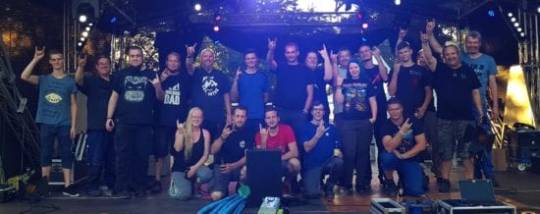
Die Fest Evil Crew! » 13. Juli 2019, Fest-Evil, Manrode » Website des Festivals Lesen Sie den ganzen Artikel
#Aepanemer#Crossplane#Divine:Zero#Evertale#FestEvil#Klabusterberries#LateGeneration#Manrode#Triddana#Winterstorm
0 notes
Text
2018-03-23 04 MUSIC now
MUSIC
Brooklyn Vegan
Lucinda Williams, Steve Earle & Dwight Yoakam going on "LSD Tour"
Jon Hopkins expands tour, playing Elsewhere after David Lynch fest
Queers & Dickies touring; Dwarves too ++ more punk shows at The Kingsland in BK
CJ, Richie & more celebrating 'Road to Ruin' at Joey Ramone Birthday Bash 2018
Annie Hart touring w/ Fujiya & Miyagi, added to Girl Ray @ Union Pool (win tix!)
Consquence of Sound
Coach Hop shares thunderous power-pop debut single, “I Like Taylor Swift”: Stream
Federal arts programs receive funding increases in 2018 federal budget
Album Review: Stone Temple Pilots Struggle to Find Themselves Without Scott Weiland
Win Tickets to KAABOO Del Mar 2018
Captain America’s Chris Evans says he’s retiring from Marvel after Avengers 4
Fact Magazine
Fractal Fantasy’s new synth turns its CGI universe into a browser instrument
Oneohtrix Point Never releases new video ‘MYRIAD’
Artist Ben Sun weaves ’60s archive footage into a retro-futurist sci-fi delight
Paper Dollhouse spin hallucinatory dream pop into sublime ambient abstraction
Björk releases remix EP featuring Jlin, Kelly Lee Owens and Lanark Artefax
Fluxblog
Make Me Feel Right
I Loved And I Lost
Very Nice Very Nice
To Be Lucky Once
The Sun In Your Cold World
Idolator
Ryan Tedder Talks Working With Selena Gomez, Shawn Mendes & More
Shawn Mendes Kicks Off A New Era With His Sweeping “In My Blood”
Lost Hit: Demi Lovato’s “Wildfire” Should Have Been A Single
Dua Lipa Performs “IDGAF” & “New Rules” On ‘Jimmy Kimmel Live!’
Fashionable Queen: Britney Spears Announces New Brand Deal With Kenzo
Listen to This
32 Tens -- Lost [Indie Rock / Alternative / Indie] (2017)
James Carr - These Ain't Raindrops [Soul] (1967)
Empire - My Party, My Rules [Heavy Metal / Metalcore / Progressive Rock] (2018)
Close Talker -- Strange Feeling [Indie Rock] (2016)
Jerry Williams -- Grab Life (Acoustic) [Indie / Pop Rock]
Popjustice
Paloma Faith’s branded content is better than your branded content
Saluting the artwork for PRETTYMUCH’s Healthy
Louisa Johnson interview: “We went, ‘oh, fuck it, let’s just get drunk’”
Popjustice’s Spring Statement: Key Points
New Music Friday: Vera Blue’s Lady Powers are still strong
Reddit Music
A Perfect Circle - The Noose [Rock]
Henry Rollins - Liar [Rock]
The Beatles' debut album Please Please Me turns 55 years old today
Bishop Briggs - River [Alternative Rock]
Anthrax & Public Enemy - Bring The Noise [Heavy Metal/Rap]
Rolling Stone
Hear David Guetta, Sia Reunite on Inspirational New Song 'Flames'
Meet Lauv, Pop's Up-and-Coming Heartbreak King
Hear SBTRKT's Heavy Remix of Chance the Rapper's 'All We Got'
Belle and Sebastian Plot U.S. Tour
Inside Dan Auerbach's Own Rolling Thunder Revue
Slipped Disc
3 hours after playing Prokofiev concerto, soloist gives birth
Deborah Borda takes on extra NY duties
Music faculty is shrunk ‘because architecture makes more money’
Otto Schenk retires his Rosenkavalier after 46 years
Bayreuth’s Brünnhilde: Agents failed me
Spotify Blog
Spotify Launches Integration with New and Existing Cadillac Models
Spotify Launches ‘Louder Together’ with First Multi-Artist Spotify Single Collaboration from Independent Stars Sasha Sloan, Nina Nesbitt and Charlotte Lawrence
Spotify Launches Self-Serve Advertising Platform in the UK and Canada
Spotify Announces Launch of Line-In
John Hancock and Spotify Give Runners Everywhere Access to Custom Playlists and Tips from Some of the World’s Fastest Marathoners
We Are the Music Makers
Next generation of EDM?
People Who Sell CDs/LPs From UK to Outside EU - Do You Complete CN22?
Record Label Situation
A collection of my guitars all made from broken and unused and old stuff what do we think?????
How to approach recording all instruments on a track
0 notes
Text
Talking broiler chicken, germ maps and maggots with Andreas Greiner
Andreas Greiner, Monument for the 308 (detail), 2016. Exhibition view of Andreas Greiner. Agentur des Exponenten. GASAG Kunstpreis 2016, Berlinische Galerie, 2016. Photo: Harry Schnitger
Andreas Greiner has built a monument to the humble broiler. A 7 meter high 3D printed version of a real chicken that had lived and died in a battery farm in Brandenburg, Germany. The artist then installed the giant sculpture inside the main hall of the Berlinische Galerie. I haven’t seen it yet but it looks poignant. It has the imposing presence of a dinosaur skeleton, the photogenic appeal of an instagram star but the mistrustful contours of a chicken that has never seen trees, grass or the light of a sunny day.
Not that i’ve ever seen any broiler chicken alive. I’m just assuming, extrapolating and letting my mind wander. Because Greiner’s work excels at triggering your imagination: he quietly lays in front of your eyes some visually stunning concepts and ideas, he never suffocates them with explanations but lets you ponder upon them and draw your own conclusions about what they say about our society, economy and culture.
Andreas Greiner, Monument for the 308, 2016. Exhibition view of Andreas Greiner GASAG Kunstpreis 2016, Berlinische Galerie, 2016, Photo. Theo Bitzer
Monument for 308 shows that Greiner is comfortable working on the macro scale but he is also quietly building an impressive career engaging with the small (maggots, flies, algae, tiny crustaceans), and the very very small (microbes of all sorts.) Greiner works with living organisms (including himself when he decided to spend a week inside a gallery in the sole company of a few insects and plants), enrolling them as both subjects of careful reflection and as collaborators. His previous projects involved buying 40 litres of maggots and bringing them to the exhibition space until they turn into flies, composing music based on
the luminous skin of a squid, convincing the Director of the Neue Nationalgalerie in Berlin to consider a fly as a living artwork and provide for its well-being, photographing portraits of algae, carefully orchestrating explosions around Berlin, etc.
The young artist recently received the GASAG Art Prize, a recognition awarded to Berlin-based artists whose work dialogues with technology and science. I caught up with him to discuss chicken, bacterial maps and the perils of working with maggots:
Heinrich, Totus Corpus – full Body Portrait of a broiler, 2015, Photo: Theo Bitzer & Andreas Greiner
Hi Andreas! I find your chicken projects very moving. But then i’ve always had a soft spot for animals. Which kind of response and reflection do you hope to elicit with works like Monument for the 308 and Heinrich (poor poor little battery chickens)?
I’m not necessarily looking to provoke pity for Heinrich, the broiler chicken. How a person reacts to my works is of course not in my control, however I would like the viewer to reflect upon the issue. We create these animals for the sole purpose of our eating habits, this is a species, which would not exist like this were it not for humans intervention into their breeding behaviour and anatomy. Heinrich is a metaphor, he represents our contemporary age in which humans are the driving creative and destructive force on planet earth. If dinosaurs are a relic from the Mesozoic Era, broiler chicken would be a “monument” of now.
Andreas Greiner, fattened chicken Éléonore before CT scan in Berlin, 2015
Heinrich at the petting zoo in Berlin Tempelhof, 2015
Andreas Greiner, Ulrike (Euastrum oblongum) Electron scanning micrograph 2016 measurement: Andreas Greiner and Martina Heider, Bayerisches Polymerinstitut, University Bayreuth
After Heinrich died, his body underwent an autopsy. What did you learn from it?
Heinrich died a few months after I handed him over to a petting zoo. The autopsy found that he most likely died from a heart attack, probably because his body was just too heavy.
I found the description of the works on your website to be fairly neutral and factual but i couldn’t help wonder whether these works were trying to make a point about animal welfare, man-made forms of nature, the food industry or maybe even veganism?
They are pointing to all of those and more. Certainly they also reflect my personal view. There is a general disregard for certain animals, which we view as an objective mass – matter to be exploited to fit our needs. My works show this, but I chose to only have short, factual descriptions like for example the documentations on my website. The reception should stay open for individual interpretation. By dealing with issues such as factory farming, genetic manipulation or the identity of animals, of course, the viewer makes their own conclusions in the end.
Andreas Greiner, Every Fly is a Piece of Art, University of the Arts, Berlin, 2012
Andreas Greiner, Every Fly is a Piece of Art, University of the Arts, Berlin, 2012
Andreas Greiner, Every Fly is a Piece of Art, University of the Arts, Berlin, 2012
Andreas Greiner, Every Fly is a Piece of Art, University of the Arts, Berlin, 2012
Andreas Greiner, Every Fly is a Piece of Art, University of the Arts, Berlin, 2012
I was feeling less sorry for the maggots then flies in the work Every Fly is a Piece of Art. I’m wondering how the whole adventure unfolded though. Did you really manage to buy all available fly maggots in Berlin and did you manage to control the flies and channel them through the exit as you had hoped? It sounds to me like a wild project where so many elements can take a direction that wasn’t expected…
Yes, it was slightly chaotic. I conceived this work for the final exhibition of my masters at the University of the Arts in Berlin. Back in 2012 with a students budget it was impossible to buy all the flies in Berlin. I visited every fisherman shop that sells maggots though and bought a huge amount of their maggots in stock. Most of the salesmen were afraid to loose their clients if they sold all of their maggots to me in order to really buy all oft them I would have had to bribe the salesmen.
In the exhibition they started hatching and flying about. All the painting students of the other studios were mad at me because the flies landed on their freshly painted surfaces. They reacted by constructing fly traps, which turned my intentions around completely. I actually had to end the project earlier than the official end of the master class exhibition – at least half of the flies (about 100 000) hatched outside in nature. After this experience, I decided to only work with a few flies or one fly at a time because this is more foreseeable.
Your practice seems to be an interesting mix of collaboration with scientists and other experts along with processes that make control over the final artworks a bit difficult. How important is it for you to be in control (or rather maybe not be in control) of the art piece you are developing?
I am interested in the processual aspects of sculpture and have integrated living organisms into many of my works. I call this co-authorship, as they co-create and transform the art work by the process of living. Uncontrollable biological processes are an integral part of the outcome of an art work.
By working with experts and scientists I am able to broaden and deepen my work by researching very specific topics and techniques. I am interested in an exchange between artistic and scientific knowledge.
Andreas Greiner, Spring Forward Fall Back, Lichthaus, Kunstverein Arnsberg, 2014. Photo: Vlado Velkov
Andreas Greiner, Spring Forward Fall Back, Lichthaus, Kunstverein Arnsberg, 2014. Photo: Vlado Velkov
Andreas Greiner, Spring Forward Fall Back, Lichthaus, Kunstverein Arnsberg, 2014. Photo: Vlado Velkov
Andreas Greiner, Spring Forward Fall Back, Lichthaus, Kunstverein Arnsberg, 2014. Photo: Vlado Velkov
I’m very curious about Spring Forward Fall Back and what you experienced during this cohabitation with an ecosystem you had created for you and for nature. What did you learn and observe during that week? How did the insects, plants and other living entities inhabit and modify the space over time?
I was invited by the Kunstverein Arnsberg for a show at the Lichthaus and decided to live in there for a week. It was an interesting experience. First of all I learnt, that spring in Arnsberg (in the Sauerland, Western Germany) starts later then in the rest of Germany. . In the beginning there were few insects, for example a single bumblebee got lost, it moved very slowly because of the cold. I brought a female moth with me from Berlin and later she actually attracted a local male moth. Insect match-making. By the end of the exhibit an ant colony had settled and the population of my animal co-inhabitants and plants had multiplied 5 times.
Andreas Greiner &, Julian Charrière, Dominions, 2011, collecting microbes at Schwarze Pumpe, Brandenburg
Andreas Greiner &, Julian Charrière, Dominions, 2011, example of an expressed growth pattern by microbes
Andreas Greiner &, Julian Charrière, Dominions, 2011, collecting microbes at Elsdorf, Brandenburg, Nordrhein-Westfalen
Andreas Greiner &, Julian Charrière, Dominions, 2011, exhibition view
In Dominions you created bacterial maps of Germany and Switzerland. From the photos and videos on the project page, it seems that you collected the microbes from very specific and interesting looking locations. Could you tell us about these places and what guided your selection of them as well as of the selection of the microbes? And what links the humble microbes with the title of the work, Dominions?
The project was a collaboration with Julian Charrière when we were still students at Olafur Eliasson‘s Institute for Spatial Experiments. We selected places in Germany and Switzerland. Some were biographically relevant (our birthplaces in Germany and Switzerland) and others were geographically important places, such as the highest mountain in Germany, the three border triangle between Germany, Belgium and the Netherlands, the eastern most point of Germany, etc. We brought sterile boxes filled with a plane layer of white culture medium for microgerms (comparable to an unexposed film or white canvas) and exposed them to the surroundings for 30min each. The collected bacteria and spores expressed different patterns and colours back in Berlin under vitrine glass.
By selecting germs from all these chosen places we reconstructed a map of Germany and Switzerland, which is not based on socio-political conventions, but defined by the microorganisms populating these areas. It’s a reference to landscape painting or photography – a snapshot of the non-perceiveable micro-landscape in the air. We humans assume to have over our landscapes with roads, cities and railways criss-crossing though the country. But it’s microorganisms, like algae and bacteria, which cover the earth and have dominion over it.
Speaking of humble lives, what is it that attracts you to the underdogs like microbes, algae, maggots, broiler chickens, etc?
One of the challenges of art is to visualize things: show things from a different perspective, or things that are generally not seen. There is a staggering mass of life that we humans never visually appreciate: industrial broiler chicken, deep-sea squids, algae which are too small to be visible, or insects, because we find them repulsive. I consider the way we interact with our surroundings very telling of our species and our times.
youtube
From Strings to Dinosaurs shown at the exhibition cycle “MULTITUDES”, curated by Anna Henckel and Nadim Samman, at Import Projects and Cycle Music and Art Festival, 2015
EExhibition view of “Andreas Greiner. Agentur des Exponenten. GASAG Kunstpreis 2016”, Berlinische Galerie, 2016. Photo: Harry Schnitger
Any upcoming project, field of research or event you could share with us?
This month, I have two exhibitions in Berlin: Golden Gate together with Armin Keplinger at Kwadrat and DAS NUMEN MEATUS at Dittrich and Schlechtriem. The finissage of my exhibition in the Berlinische Gallerie is on the 6th of February, where Tyler Friedman and I will show the work From Strings to Dinosaurs. The algae in the reactor will be placed on top of the self-playing piano and illuminate during the musical composition.
Artist Andreas Greiner in his Berlin workshop. Photo: Mike Wolff in Der Tagesspiegel
Thanks Andreas!
from We Make Money Not Art http://ift.tt/2iaNjmg via IFTTT
0 notes
Text

vegan sushi platter 🍱
Maguro Fine Asian Cuisine- Bayreuth, Germany 🇩🇪
#vegan#veganism#go vegan#be vegan#veg#vegan travel#vegan dinner#vegan in germany#vegan sushi#sushi#plant based#bayreuth#germany#veggies#vegetable#veggie sushi
25 notes
·
View notes
Text

nothing better than a homemade bday cake for friends!!! even better when it’s vegan. lemon strawberry🫶🏻🫶🏻🫶🏻
#vegan#veganism#go vegan#be vegan#veg#vegan travel#vegan treats#vegan dessert#vegan cake#lemom cake#lemon#strawberry#vegan baking#baking#vegan birthday cake#birthday cake#bayreuth#germany#birthday
27 notes
·
View notes
Text
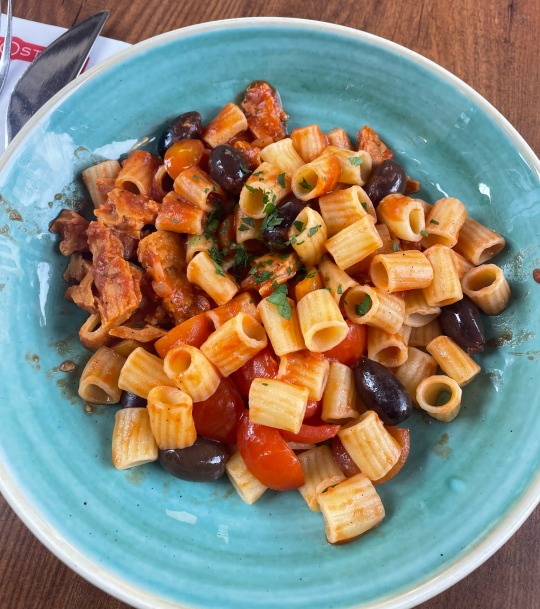
Vegan pasta dish with soy meat substitute. Pretty decent option at an otherwise not super friendly vegan chain!
L’Osteria - Bayreuth, Germany 🇩🇪
#vegan#veganism#go vegan#be vegan#veg#vegan dinner#vegan in germany#dairy free#vegan meat#meatless#vegetarian#meat substitutes#vegan pasta#pasta#vegan in bayreuth#bayreuth#vegan friendly#vegan option#veggies#vegetables
35 notes
·
View notes
Text

nothing like a wholesome vegan picnic to enjoy the sun, when it comes out here in cloudy Bayreuth🇩🇪
#vegan#veganism#go vegan#be vegan#veg#vegan treats#vegan picnic#picnic#falafel#veggies#vegetarian#bayreuth#germany#vegan lunch#lunch#healthy#health#easy meals#hummus
34 notes
·
View notes
Text
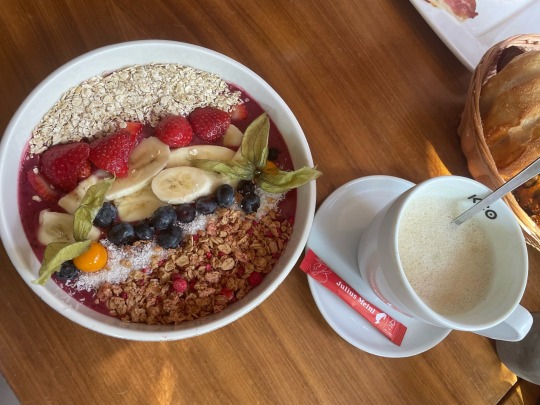
a very delicious and filling breakfast bowl, found at the local biergarten! love all the options even small city Germany has to offer😍
Café Florian- Bayreuth, Germany 🇩🇪
#vegan#veganism#go vegan#be vegan#veg#vegan treats#vegan in germany#vegan dessert#dairy free#brunch#breakfast#vegan breakfast#vegan brunch#germany#vegan in bayreuth#bayreuth#smoothie bowl#fruit#granola#coffee#cafe
21 notes
·
View notes
Text

vegan lemon cake and black forest cupcake🤝
Torten Schmiede- Bayreuth, Germany 🇩🇪
#vegan#veganism#go vegan#be vegan#veg#vegan travel#vegan treats#vegan in germany#vegan dessert#vegan cake#vegan cup cake#cupcake#cake#vegan bakery#bakery#germany#bayreuth#lemon cake#black forest cake#cafe#vegan cafe
19 notes
·
View notes
Text
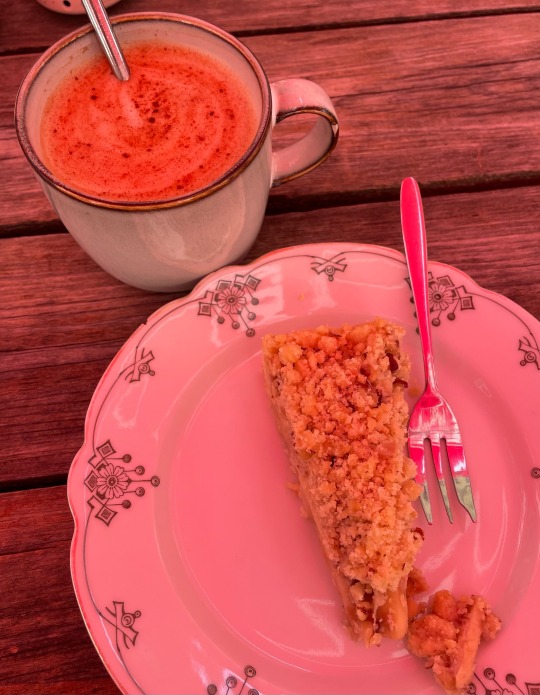


My favorite cafe in Bayreuth always has great vegan cake options. Pictured are apple crumble, rhubarb pie, and vanilla cheesecake!
Heimathafen - Bayreuth, Germany 🇩🇪
#vegan#veganism#go vegan#be vegan#veg#vegan treats#vegan in germany#vegan dessert#dairy free#vegan cake#cake#cheesecake#vegan cheese#rhubarb#apple crumble#bayreuth#vegan in bayreuth#germany#vegan sweets#cafe#vegan cafe#desserts
11 notes
·
View notes